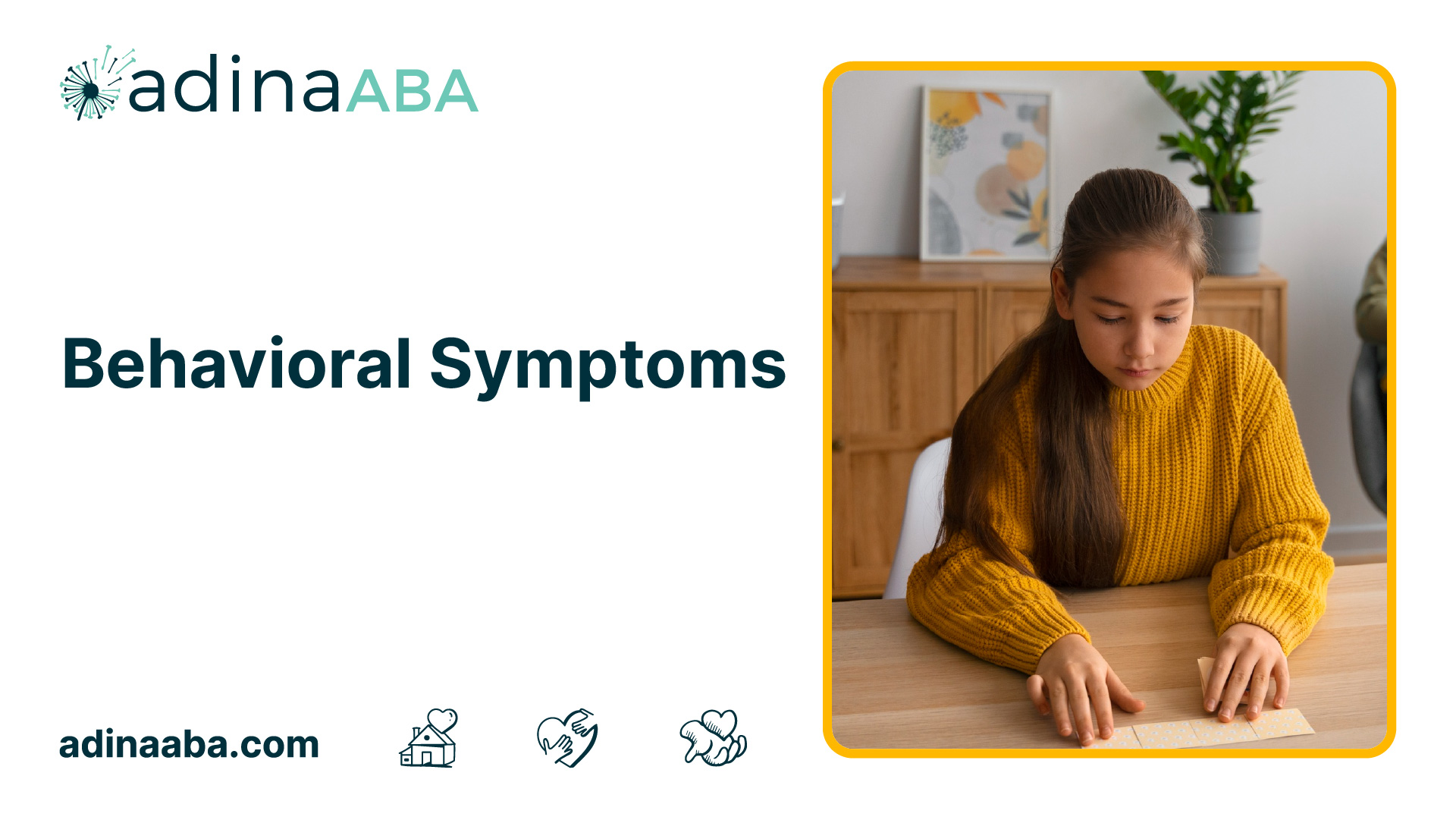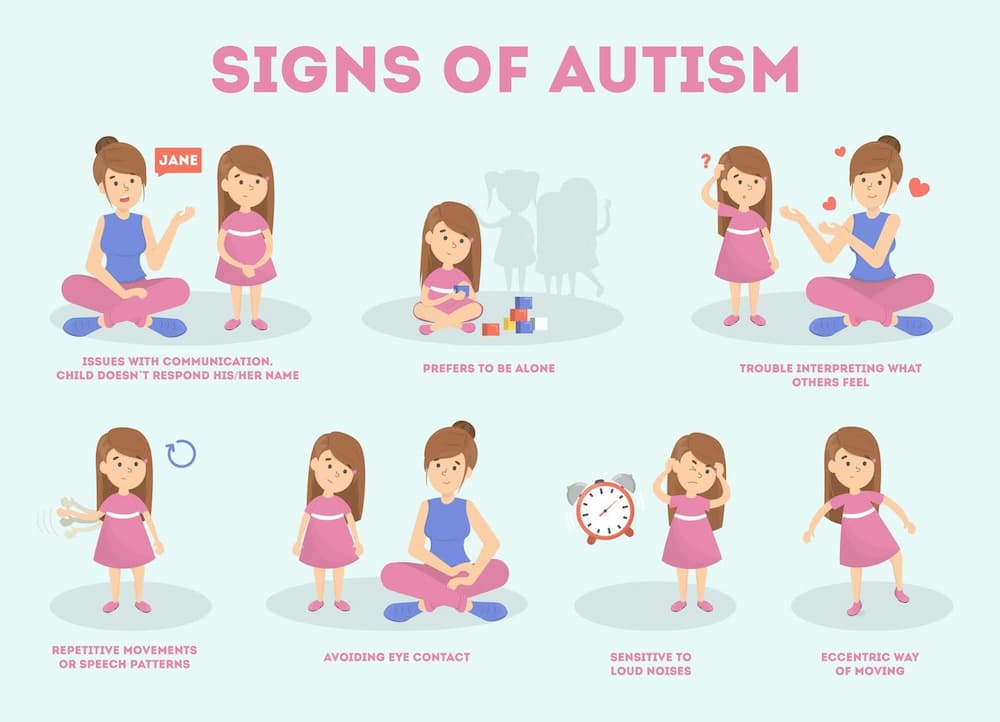Do Autism Spectrum Therapies guide developing independence in teens with ASD?
Understanding the Impact of Behavioral Autism on Day-to-day Live and Social Communications
You might not understand exactly how deeply behavioral autism affects every day life and social communications. Individuals on the range frequently navigate a world loaded with interaction hurdles and sensory overload. These difficulties can bring about aggravation and seclusion, impacting their partnerships and overall wellness. Comprehending these subtleties is essential for fostering supportive settings. What approaches can we apply to develop even more significant links and inclusive rooms? The responses could surprise you.
Specifying Behavior Autism and Its Characteristics
Behavioral autism, frequently described as autism range problem (ASD), encompasses a range of problems characterized by obstacles in social interaction, communication, and repetitive behaviors. You may notice that people with ASD commonly battle to analyze social cues, which can cause misunderstandings in conversations. They may locate it tough to establish eye call or take part in little talk, making social situations really feel overwhelming.
Interaction problems can show up in various means, from postponed speech development to a choice for utilizing less words. By acknowledging these qualities, you can cultivate an environment that promotes approval and encourages efficient interaction, aiding people with autism flourish in their daily communications.
The Range of Autism: Comprehending Irregularity in Habits
Autism spectrum condition (ASD) isn't a one-size-fits-all medical diagnosis; it varies commonly among people. You might observe that some individuals with ASD display moderate signs, while others might encounter more considerable challenges. This variability can show up in actions, passions, and sensory level of sensitivities. You may come across people who are very spoken and involve conveniently in discussions, while others might like solitary activities or connect non-verbally.
Furthermore, the means individuals with ASD react to sensory input can differ considerably; some could be bewildered by loud noises or brilliant lights, whereas others flourish in boosting settings. The range likewise includes distinctions in social communications; some people might have a hard time to translate social hints, while others browse social setups with relative simplicity. Comprehending this variability is important, as it helps you appreciate each individual's one-of-a-kind experience and dressmaker assistance to their certain needs, cultivating an extra comprehensive setting for everybody.
Communication Difficulties Encountered by Individuals With Autism
When you engage with individuals on the autism range, you might observe their special communication challenges. They typically face troubles with both nonverbal and spoken hints, which can impact their social communications. Comprehending these barriers is necessary for promoting better links and assistance.

Verbal Interaction Troubles
Lots of individuals on the autism range experience spoken interaction difficulties that can substantially influence their day-to-day interactions. Your tone, speed, or quantity might not straighten with social assumptions, creating others to misunderstand your purposes. Recognizing these difficulties can assist you and your support network create techniques to enhance interaction and foster much better connections with others in your day-to-day life.
Nonverbal Interaction Obstacles
Verbal communication isn't the only obstacle individuals on the autism range face; nonverbal interaction barriers can be simply as significant. These difficulties can lead to misconceptions or misconceptions of social cues, making communications feel frustrating or confusing. By dealing with nonverbal communication, you can locate strategies to enhance your social experiences and boost your general high quality of life.
Social Communication Impacts
Social communications can often really feel overwhelming because of the unique interaction difficulties faced by individuals with autism. You may have problem with interpreting social cues, making it difficult to comprehend mockery or body language. This can bring about misconceptions or uncomfortable minutes in conversations. Additionally, launching and maintaining conversations might feel tough, triggering stress and anxiety in social scenarios. You may choose organized settings, making spontaneous interactions uncomfortable. It's additionally common to experience problem in participating in little talk, which can hinder developing brand-new friendships. Identifying these difficulties can assist you locate methods to enhance communication, such as practicing social skills in risk-free settings or making use of visual aids - Aba Therapist Near Me. Understanding your needs allows you to browse social communications with higher confidence and ease.
Social Communication and Partnership Building in Autism
While building relationships can be challenging for individuals with autism, comprehending their unique perspectives and interaction designs can promote meaningful connections. click here You might observe that several individuals on the spectrum like direct interaction and might deal with social hints or tiny talk. By being uncomplicated in your interactions, you can help develop an environment where they really feel comfortable.
Make the effort to observe and listen exactly how they share themselves. This insight can lead you in steering discussions much more successfully. Taking part in shared passions can also work as a bridge to much deeper links. Whether it's a hobby, a favorite program, or a common enthusiasm, these usual threads can open doors to relationship.
Daily Life Regimen: Navigating Difficulties and Strategies
Navigating daily life routines can be especially challenging for individuals with autism, specifically when unforeseen modifications occur. You could discover comfort in having an organized schedule, as it assists you anticipate what's next. It's typical to feel overwhelmed or anxious when disruptions happen. To navigate these obstacles, think about applying aesthetic timetables or lists. These tools can offer clarity and peace of mind.
Developing a routine that consists of sensory breaks can additionally be helpful. This aids create an understanding environment.
Finally, practice mindfulness strategies to take care of stress and anxiety and stress and anxiety. Simple breathing workouts or grounding methods can make a considerable distinction. By integrating these strategies, you can improve your daily routine and decrease disturbances, making life really feel extra workable.
Strengths and Capabilities of People on the Autism Range
Recognizing every day life routines is just one aspect of the autism experience. Numerous people on the autism spectrum have amazing toughness and capabilities that establish them apart. You might locate that your attention to detail is exceptional, allowing you to succeed in tasks that require precision and focus. Your ability to assume outside the box can cause ingenious solutions in different circumstances.
Additionally, your memory abilities frequently beam, especially in areas of rate of interest. Aba Therapist. This flair for preserving info can make you a beneficial resource in areas like modern technology, art, or science. You might also show strong visual reasoning, allowing you to picture complex concepts and solve troubles creatively
Furthermore, your special point of view on the globe can promote empathy and understanding in others, enriching social communications. Embracing these staminas not just boosts your self-confidence yet additionally aids others appreciate the diverse abilities you give the table.
Creating Inclusive Environments for Individuals With Autism
Producing inclusive settings for people with autism begins with making sensory-friendly rooms that satisfy their one-of-a-kind requirements. You can likewise promote opportunities for social interaction, aiding to construct connections and friendships. By making these modifications, you'll add to an extra inviting ambience for everybody.
Creating Sensory-Friendly Spaces
While creating sensory-friendly spaces, it's crucial to show on the distinct requirements of people with autism. Integrate peaceful areas where people can retreat and charge when bewildered. Include aesthetic timetables or clear signage to aid individuals browse the space with confidence.
Promoting Social Interaction Opportunities
Creating sensory-friendly spaces not only addresses individual convenience but likewise sets the phase for meaningful social interactions amongst individuals with autism. To advertise these interactions, produce inclusive atmospheres that welcome involvement. Arrange organized activities, like art classes or group video games, that motivate cooperation without frustrating sensory input. Usage visual aids and clear communication to aid everyone involve comfortably. Urge peer mentoring, pairing individuals with autism with encouraging peers who can guide them with social situations. In addition, take into consideration hosting regular area occasions click here that commemorate neurodiversity, cultivating acceptance and understanding amongst all participants. By executing these strategies, you can improve social possibilities, assisting individuals with autism develop friendships and enhance their social abilities in a risk-free, welcoming environment.

Regularly Asked Questions
Just How Can Buddies Support Somebody With Behavioral Autism?
You can support a pal with behavioral autism by being client, listening proactively, and valuing their borders. Engage in tasks they enjoy, connect openly, and produce a comfy environment where they feel valued and understood.
What Resources Are Readily Available for Moms And Dads of Kid With Autism?
You can explore various sources for moms and dads of children with autism, including assistance teams, academic websites, and regional community services. Getting in touch with various other moms and dads can likewise provide valuable understandings read more and shared experiences to help browse challenges.
Can Behavioral Autism Change Over Time?

Yes, behavior autism can transform over time. You might observe changes in interaction, social skills, and actions as your kid grows. Early intervention and assistance commonly play essential duties in these developmental adjustments.
Exactly How Do Sensory Level Of Sensitivities Influence Every Day Life?
Sensory level of sensitivities can make daily experiences frustrating. You might battle with loud noises or brilliant lights, bring about stress or avoidance. Locating settings that suit your requirements can considerably enhance your comfort and total everyday life.
What Prevail Misconceptions About Behavioral Autism?
You could assume behavioral autism just affects interaction abilities, yet it's more facility. Lots of think individuals lack empathy or intelligence, which isn't real. Understanding these false impressions helps foster acceptance and support for those on the spectrum.
Behavioral autism, usually referred to as autism range condition (ASD), encompasses a variety of problems characterized by obstacles in social interaction, communication, and repeated habits.Social communications can frequently really feel overwhelming due to the special interaction difficulties dealt with by individuals with autism.Designing sensory-friendly areas not only addresses individual convenience yet likewise sets the phase for meaningful social interactions amongst people with autism. Motivate peer mentoring, pairing people with autism with encouraging peers who can direct them through social scenarios. By applying these techniques, you can boost social chances, aiding people with autism develop relationships and reinforce their social abilities in a safe, inviting environment.